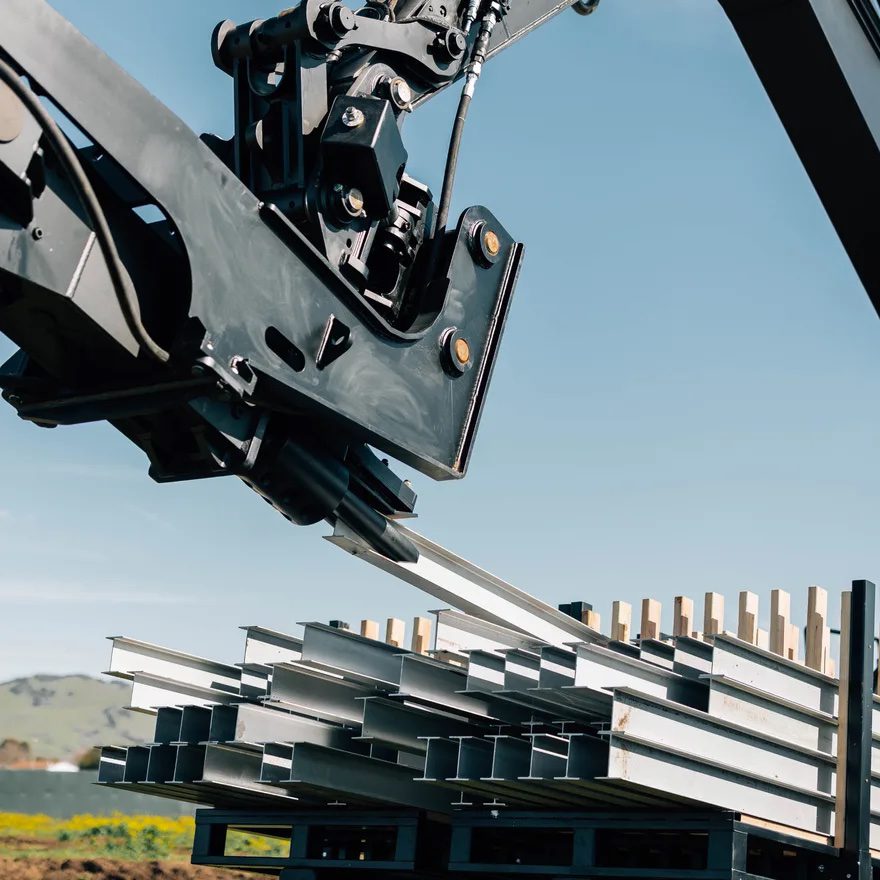One of the biggest challenges facing the construction industry right now is a lack of available workers to handle all the projects that need to be completed. There is heavy demand for residential construction to address a shortage of available homes. Meanwhile, the current administration has outlined ambitious plans to build out the nation’s infrastructure.
As the Washington Post reported earlier this year, building costs are rising while “hundreds of thousands of jobs remain unfilled.” To address the problem, construction companies have turned to robots to automate some of the work.
One of the rising players in the field is Built Robotics, a San Francisco-based robot technology company. In March, Built Robotics introduced an autonomous pile-driving robot designed to speed up the process of building utility-scale solar farms, with the additional bonus of making solar energy available even in remote locations. The robot is named “RPD 35” and was unveiled at the CONEXPO-CON/AGG convention in Las Vegas, “Forbes” reported.

Photo Courtesy Built Robotics
Built Robotics is best known as the inventor of the Exosystem, which it calls “the world’s first autonomy solution for excavators.” The RPD 35 builds on the technology by helping to construct utility-scale solar foundations “up to five times faster than with traditional means and methods,” the company said in a press release.
To the untrained eye, the RPD 35 looks like any other construction excavator, only with a sleeker design. According to Built Robotics, the U.S. plans to run “half of the country” off of solar energy within the next couple of decades but is currently only at 3%.
One reason the RPD 35 can speed up the process of building solar farms is that it carries the piles on board the excavator, ready to be driven into the ground.
A typical solar farm requires “tens of thousands of piles to be installed,” the press release said, and each must be driven into the ground “upwards of eight feet and positioned at an accuracy of less than an inch.” Together, the piles form the structural foundation of the solar array.
The RPD 35 combines each of the piling process steps — survey, pile distribution, pile driving, and inspection — into a single package. According to the company, a two-person crew can install more than 300 piles a day using the machine.
“Solar piling is a tough, repetitive job, one well suited to automation,” Noah Ready-Campbell, founder and CEO of Built Robotics, said in a statement. “Our piling robots will dramatically improve the efficiency of workers on job sites, which is critical in the chronically tight construction labor market. And just as importantly, they will take people out of harm’s way, reducing noise exposure, strain, struck-by, and pinch hazards.”
As the Washington Post noted, Ready-Campbell has plenty of experience in the building industry, having grown up in a construction family and spending his summers on job sites. His post-college professional career included a stint at Google. He launched Built Robotics in 2016, and the company introduced the Exosystem a few years later.

Photo Courtesy Built Robotics
The Exosystem serves as the “eyes, ears, and brain” of the excavator and can run without anyone operating it, the “Washington Post” reported.
Most of Built Robotics’ clients are renewable energy firms that operate in remote areas without much available labor.
The RPD 35 is the company’s second “fully-baked commercial product” following the Exosystem, Ready-Campbell told “Forbes” in an interview.
“Like many autonomy and robotics companies, we spent the first couple of years prototyping,” he said. “The RPD 35 builds on our Exosystem autonomous platform, which is really the brain of the system. We use the Exosystem along with a number of other components to transform an excavator into a pile-driving robot.”
As of January 2023, Built Robotics had raised more than $110 million from investors, and its robots helped install more than 2 gigawatts of solar capacity across the U.S., or enough to power more than 400,000 homes.





